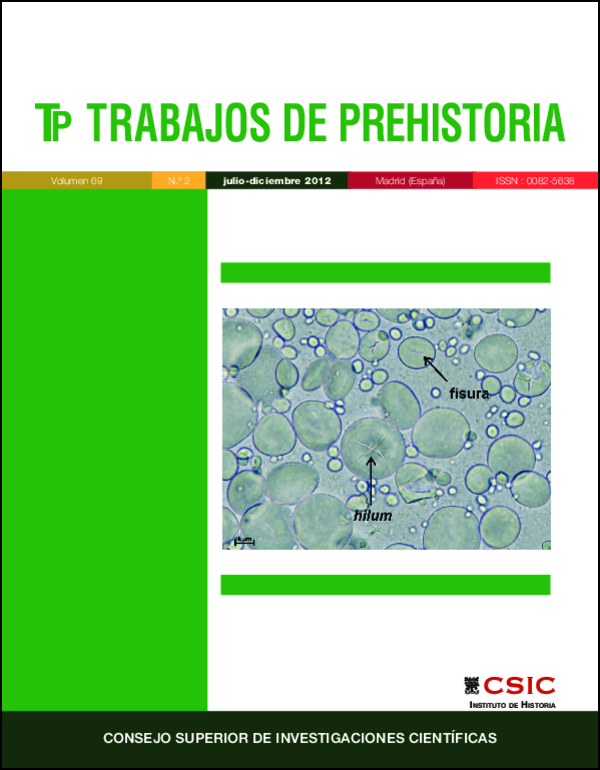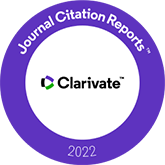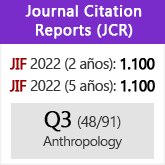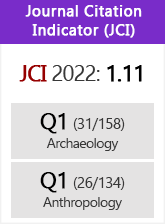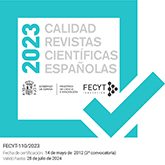¿Es el lenguaje (complejo) el resultado de una transferencia genética entre neandertales y humanos modernos?
DOI:
https://doi.org/10.3989/tp.2012.12089Palabras clave:
Arqueología, Biolingüística, Cognición, Filogenia, Lenguaje moderno, Neandertales, Paleoantropología, Paleártico occidental, Pleistoceno superiorResumen
La reciente constatación de ADN neandertal en determinadas poblaciones humanas modernas sugiere un cruce limitado entre ambas especies. Esta transferencia genética pudo haber afectado a las capacidades cognitivas de los neandertales y justificar, en particular, que hubiesen tenido lenguaje moderno. Tal posibilidad se examina a la luz de las propias evidencias genéticas, pero también de las de tipo paleoantropológico y arqueológico utilizadas habitualmente para tratar de inferir la presencia de lenguaje en otras especies de homínidos. En conjunto, dichas evidencias parecen sugerir que el lenguaje complejo habría sido una adquisición exclusiva de los humanos modernos. Ello es compatible, no obstante, con una continuidad evolutiva de los diversos mecanismos biológicos y cognitivos implicados en el procesamiento lingüistico y en último término, con la presencia de algún tipo de lenguaje, computacionalmente más simple, en los neandertales.
Descargas
Citas
Alarcón, M.; Abrahams, B. S.; Stone, J. L.; Duvall, J. A.; Perederiy, J. V.; Bomar, J. M.; Sebat, J.; Wigler, M.; Martin, C. L.; Ledbetter, D. H.; Nelson, S. F.; Cantor, R. M. y Geschwind, D. H. 2008: "Linkage, association, and gene-expression analyses identify CNTNAP2 as an autism-susceptibility gene". American Journal of Human Genetics 82: 150-159. http://dx.doi.org/10.1016/j.ajhg.2007.09.005 PMid:18179893 PMCid:2253955
Anderson, S. R. y Lightfoot, D. W. 1999: "The human language faculty as an organ". Annual Review of Physiology 62: 697-722. http://dx.doi.org/10.1146/annurev.physiol.62.1.697 PMid:10845108
Bagri, A.; Marín, O.; Plump, A. S.; Mak, J.; Pleasure, S. J.; Rubenstein, J. L. R. y Tessier-Lavigne, M. 2002: "Slit proteins prevent midline crossing and determine the dorsoventral position of major axonal pathways in the mammalian forebrain". Neuron 33: 233-248. http://dx.doi.org/10.1016/S0896-6273(02)00561-5
Baker, M. C. 2001: The Atoms of Language. The Mind's Hidden Rules of Grammar. Basic Books. New York.
Bakkaloglu, B.; O'Roak, B. J.; Louvi, A.; Gupta, A. R.; Abelson, J. F.; Morgan, T. M.; Chawarska, K.; Klin, A.; Ercan-Sencicek, A. G.; Stillman, A. A.; Tanriover, G.; Abrahams, B. S.; Duvall, J. A.; Robbins, E. M.; Geschwind, D. H.; Biederer, T.; Gunel, M.; Lifton, R. P. y State, M. W. 2008: "Molecular cytogenetic analysis and resequencing of contactin associated protein-like 2 in autism spectrum disorders". American Journal of Human Genetics 82: 165-73. http://dx.doi.org/10.1016/j.ajhg.2007.09.017 PMid:18179895 PMCid:2253974
Balaban E. 2006: "Cognitive developmental biology: history, process and fortune's wheel". Cognition 101: 298-332. http://dx.doi.org/10.1016/j.cognition.2006.04.006 PMid:16750186
Balari, S.; Benítez-Burraco, A.; Camps, M.; Longa, V. M.; Lorenzo, G. y Uriagereka, J. 2008: "¿Homo loquens neanderthalensis? En torno a las capacidades simbólicas y lingüisticas del neandertal". Munibe (Antropologia-Arkeologia) 59: 3-24.
Balari, S.; Benítez-Burraco, A.; Camps, M.; Longa, V. M.; Lorenzo, G. y Uriagereka, J. 2011: "The archaeological record speaks: Bridging Anthropology and Linguistics". International Journal of Evolutionary Biology. Balari, S.; Benítez-Burraco, A.; Longa. V. M. y Lorenzo, G. (e.p.): "The fossils of language: What are they, who has them, how did they evolve?". En C. Boeckx y K. K. Grohmann (eds): The Cambridge Handbook of Biolinguistics. Cambridge University Press. Cambridge.
Balari, S. y Lorenzo, G. 2009: "Computational phenotypes: Where the Theory of Computation meets Evo- Devo". Biolinguistics 3: 2-60.
Bar-Yosef, O. 1998: "On the nature of transitions: The Middle to Upper Palaeolithic and the Neolithic re volution". Cambridge Archaeological Journal 8: 141-163. http://dx.doi.org/10.1017/S0959774300001815
Bar-Yosef, O. y Bordes, J. G. 2010: "Who were the makers of the Châtelperronian culture?". Journal of Human Evolution 59: 586-593. http://dx.doi.org/10.1016/j.jhevol.2010.06.009 PMid:20692683
Bednarik, R. 2006: "The Middle Palaeolithic engravings from Oldisleben, Germany". Anthropologie 44: 113-121.
Bedogni, F.; Hodge, R. D.; Nelson, B. R.; Frederick, E. A.; Shiba, N.; Daza, R. A. y Hevner, R. F. 2010: "Autism susceptibility candidate 2 (Auts2) encodes a nuclear protein expressed in developing brain regions implicated in autism neuropathology". Gene Expression Patterns 10: 9-15. http://dx.doi.org/10.1016/j.gep.2009.11.005 PMid:19948250 PMCid:2818569
Benítez-Burraco, A. 2005: "FOXP2: del trastorno específico a la biología molecular del lenguaje. I. Aspectos etiológicos, neuroanatómicos, neurofisiológicos y moleculares". Revista de Neurología 40: 671-682. PMid:15948071
Benítez-Burraco, A. 2007: "La evolución del volumen cerebral y la aparición del lenguaje: aspectos moleculares". Revista Española de Antropología Física 28: 1-17.
Benítez-Burraco, A. 2008a: "FOXP2 y la biología molecular del lenguaje: nuevas evidencias. I. Aspectos fenotípicos y modelos animales". Revista de Neurología 46: 289-298. PMid:18351569
Benítez-Burraco, A. 2008b: "FOXP2 y la biología molecular del lenguaje: nuevas evidencias. II. Aspectos moleculares e implicaciones para la ontogenia y la filogenia del lenguaje". Revista de Neurología 46: 351-359. PMid:18368680
Benítez-Burraco, A. 2009: Genes y lenguaje: aspectos ontogenéticos, filogenéticos y cognitivos. Reverté. Barcelona. PMid:19173205
Benítez-Burraco, A. 2010: "Neurobiología y neurogenética de la dislexia". Neurología 25: 563-581. http://dx.doi.org/10.1016/j.nrl.2009.12.010 PMid:21093706
Benítez-Burraco, A. 2011: "Aspectos problemáticos del análisis genético de los trastornos específicos del lenguaje: FOXP2 como paradigma". Neurología. PMid:21652119
Benítez-Burraco, A. y Longa, V. M. 2011: "El papel del ADN fósil en Paleoantropología: FOXP2, Neandertales y lenguaje". Zephyrus 67: 45-68.
Benítez-Burraco, A.; Longa, V. M.; Lorenzo, G. y Uriagereka, J. 2008: "Also sprach Neanderthalsis... Or did she?". Biolinguistics 2: 225-232.
Bermúdez de Castro, J. Mª. 2010: La evolución del talento. Cómo nuestros orígenes determinan nuestro presente. Debate. Barcelona.
Bickerton, D. 1990: Language and Species. University of Chicago Press. Chicago.
Bishop, D. V. M. y Leonard, L. 2001: Speech and Language Impairments in Children: Causes, Characteristics, Intervention and Outcome. Psychology Press. Oxford.
Boë, L. J.; Heim, J. L.; Honda, K. y Maeda, S. 2002: "The potential Neanderthal vowel space was as large as that of modern humans". Journal of Phonetics 30: 465-484. http://dx.doi.org/10.1006/jpho.2002.0170
Boë, L. J.; Maeda, S. y Heim, J. L. 1999: "Neanderthal man was not morphologically handicapped for speech". Evolution of Communication 3: 49-77. http://dx.doi.org/10.1075/eoc.3.1.05boe
Bolhuis, J. J.; Okanoya, K. y Scharff, C. 2010: "Twitter evolution: converging mechanisms in birdsong and human speech". Nature Reviews. Neuroscience 11: 747-59. http://dx.doi.org/10.1038/nrn2931 PMid:20959859
Brentari, D. 2010: Sign Languages. Cambridge University Press. New York. http://dx.doi.org/10.1017/CBO9780511712203 PMid:21090018
Britten, R. J. y Davidson, E. H. 1971: "Repetitive and non-repetitive DNA sequences and a speculation on the origins of evolutionary novelty". The Quarterly Review of Biology 46: 111-138. http://dx.doi.org/10.1086/406830 PMid:5160087
Calarco, J. A.; Xing, Y.; Cáceres, M.; Calarco, J. P.; Xiao, X.; Pan, Q.; Lee, C.; Preuss, T. M. y Blencowe, B. J. 2007: "Global analysis of alternative splicing differences between humans and chimpanzees". Genes and Development 21: 2963-2975. http://dx.doi.org/10.1101/gad.1606907 PMid:17978102 PMCid:2049197
Camps, M. y Uriagereka, J. 2006: "The Gordian Knot of linguistic fossils". En J. Rosselló y J. Martín (eds.): The Biolinguistic Turn. Issues on Language and Biology. Universitat de Barcelona. Barcelona: 34-65.
Cârciumaru, M.; Moncel, M. H.; Anghelinu, M. y Cârciumaru, R. 2002: "The Cioarei- Borosteni cave (Carpathian Mountains, Romania): Middle Paleolithic finds and technological analysis of the lithic assemblages". Antiquity 76: 681-690.
Carrión, J. S.; Rose, J. y Stringer, C. 2011: "Early Human Evolution in the Western Palaearctic: Ecological Scenarios". Quaternary Science Reviews 30: 1281-1295. http://dx.doi.org/10.1016/j.quascirev.2011.04.003
Carruthers, P. 2002: "The cognitive functions of language". Behavioral and Brain Sciences 25: 657-674. http://dx.doi.org/10.1017/S0140525X02000122 PMid:14598623
Chomsky, N. A. 1956: "Three models for the description of language". IEEE Transactions on Information Theory 2: 113-124. http://dx.doi.org/10.1109/TIT.1956.1056813
Chomsky, N. A. 1959: "On certain formal properties of grammars". Information and Control 2: 137-167. http://dx.doi.org/10.1016/S0019-9958(59)90362-6
Chomsky, N. A. 1965: Aspects of the Theory of Syntax. MIT Press. Cambridge.
Chomsky, N. A. 1968: Language and Mind. Hartcourt Brace Jovanovich. New York.
Chomsky, N. A. 1980: Rules and Representations. Columbia University Press. New York.
Chomsky, N. A. 1988: Language and Problems of Knowledge: The Managua Lectures. MIT Press. Cambridge.
Coolidge, F. L. y Wynn, T. 2004: "A cognitive and neuropsychological perspective on the Châtelperronian". Journal of Anthropological Research 60: 55-73.
Coolidge, F. L. y Wynn, T. 2005: "Working memory, its executive functions, and the emergence of modern thinking". Cambridge Archaeological Journal 15: 5-26. http://dx.doi.org/10.1017/S0959774305000016
Corballis, M. C. 2004: "FOXP2 and the mirror system". Trends in Cognitive Sciences 8: 95-96. d'Errico, F. 2003: "The invisible frontier: A multispecies model for the origin of behavioral modernity". Evolutionary Anthropology 12: 188-202.
d'Errico, F. 2008: "The archaeology of language origin". En A. Smith, K. Smith y R. Ferrer i Cancho (eds.): The Evolution of Language. Proceedings of EVOLANG7. World Scientific Publishing. Singapur: 413-414.
d'Errico, F. 2009: "The archaeology of early religious practices: a plea for a hypothesis- testing approach". En C. Renfrew y I. Morley (eds.): Becoming Human. Innovation in Prehistoric Material and Spiritual Culture. Cambridge University Press. New York: 104-122.
d'Errico, F.; Henshilwood, C.; Lawson, G.; Vanhaeren, M.; Tillier, A. M.; Soressi, M.; Bresson, F.; Maureille, B.; Nowell, A.; Lakarra, J.; Backwell, L. y Julien, M. 2003: "Archeological evidence for the emergence of language, symbolism, and music –An alternative multidisciplinary perspective". Journal of World Prehistory 17: 1-70. http://dx.doi.org/10.1023/A:1023980201043
d'Errico, F.; Henshilwood, C.; Vanhaeren, M. y van Niekerk, K. 2005: "Nassarius kraussianus shell beads from Blombos Cave: evidence for symbolic behaviour in the Middle Stone Age". Journal of Human Evolution 48: 3-24. http://dx.doi.org/10.1016/j.jhevol.2004.09.002 PMid:15656934
d'Errico, F. y Sánchez Goñi, M. F. 2003: "Neandertal extinction and the millennial scale climatic variability of OIS 3". Quaternary Science Reviews 22: 769-788. http://dx.doi.org/10.1016/S0277-3791(03)00009-X
d'Errico, F. y Soressi, M. 2002: "Systematic use of pigment by Pech-de-l'Azé Neandertals: Implications for the origin of behavioral modernity". Journal of Human Evolution 42, 3: A13.
d'Errico, F. y Vanhaeren, M. 2009: "Earliest personal ornaments and their significance for the origin of language debate". En R. Botha y C. Knight (eds.): The Cradle of Language. Oxford University Press. New York: 16-40.
d'Errico, F.; Zilhão, J.; Julien, M.; Baffier, D. y Pelegrin, J. 1998: "Neandertal acculturation in Western Europe? A critical review of the evidence and its interpretation". Current Anthropology 39: S1-S22. http://dx.doi.org/10.1086/204689
Davidson, E. H. 1986: Gene Activity in Early Development. Academic Press. Orlando.
Dennet, D. 1995: Darwin's Dangerous Idea. Simon & Schuster. New York.
Dennet, D. 1996: Kinds of Minds. Toward an Understanding of Consciousness. Basic Books. New York.
Dorus, S.; Vallender, E. J.; Evans, P. D.; Anderson, J. R.; Gilbert, S. L.; Mahowald, M. Wyckoff, G. J.; Malcom, Ch. M. y Lahn, B. T. 2004: "Accelerated evolution of nervous system genes in the origin of Homo sapiens". Cell 119: 1027-1040. http://dx.doi.org/10.1016/j.cell.2004.11.040 PMid:15620360
Duarte, C.; Mauricio, J.; Pettit, P.B.; Souto, P.; Trinkaus, E.; Van der Plicht, H. y Zilhao, J. 1999: The early Upper Paleolithic human skeleton from the Abrigo do Lagar Velho (Portugal) and modern human emergence in Iberia ". Proceedings of the National Academy of Sciences U.S.A. 96, 7604-7609. http://dx.doi.org/10.1073/pnas.96.13.7604 PMid:10377462 PMCid:22133
Enard, W.; Khaitovich, P.; Klose, J.; Zöllner, S.; Heissig, F.; Giavalisco, P.; Nieselt-Struwe, K.; Muchmore, E.; Varki, A.; Ravid, R.; Doxiadis, G. M.; Bontrop, R. E. y Pääbo, S. 2002b: "Intra- and interspecific variation in primate gene expression patterns". Science 296: 340-343. http://dx.doi.org/10.1126/science.1068996 PMid:11951044
Enard, W.; Przeworski, M.; Fisher, S. E.; Lai, C. S.; Wiebe, V.; Kitano, T.; Monaco, A. P. y Pääbo, S. 2002a: "Molecular evolution of FOXP2, a gene involved in speech and language". Nature 418: 869- 872. http://dx.doi.org/10.1038/nature01025 PMid:12192408
Finlayson, C. 2005: "Biogeography and evolution of the genus Homo". Trends in Ecology and Evolution 20: 457-63. http://dx.doi.org/10.1016/j.tree.2005.05.019 PMid:16701417
Finlayson, C. y Carrión, J. S. 2007: "Rapid ecological turnover and its impact on Neanderthal and other human populations". Trends in Ecology and Evolution 22: 213-222. http://dx.doi.org/10.1016/j.tree.2007.02.001 PMid:17300854
Fisher, S. E. y Scharff, C. 2009: "FOXP2 as a molecular window into speech and language". Trends in Genetics 25: 166-177. http://dx.doi.org/10.1016/j.tig.2009.03.002 PMid:19304338
Fodor, J. D. y Crowther, C. 2002: "Understanding stimulus poverty arguments". The Linguistic Review 19: 105-145.
Frayer, D. W.; Fiore, I.; Lalueza-Fox, C.; Radovčić, J. y Bondioli, L. 2010: "Right handed Neandertals: Vindija and beyond. Journal of Anthropological Sciences 88: 113-127. PMid:20834053
Frayer, D. W.; Orschiedt, J.; Cook, J.; Russell, M. D. y Radovčić, J. 2006: "Krapina 3: Cut marks and ritual behavior?". Periodicum Biologorum 108: 519-524.
Geschwind, D. H. y Konopka, G. 2009: "Neuroscience in the era of functional genomics and systems biology". Nature 461: 908-915. http://dx.doi.org/10.1038/nature08537 PMid:19829370
Golovanova, L. V.; Hoffecker, J. F.; Kharitonov, V. M. y Romanova, G. P. 1999: "Mezmaiskaya Cave: A Neanderthal occupation in the Northern Caucasus". Current Anthropology 40: 77-86. http://dx.doi.org/10.1086/515805
Green, R. E.; Krause, J.; Briggs, A. W.; Maricic, T.; Stenzel, U.; Kircher, M.; Patterson, N.; Li, H.; Zhai, W.; Fritz, M. H.; Hansen, N. F.; Durand, E. Y.; Malaspinas, A. S.; Jensen, J. D.; Marques-Bonet, T.; Alkan, C.; Prüfer, K.; Meyer, M.; Burbano, H. A.; Good, J. M.; Schultz, R.; Aximu-Petri, A.; Butthof, A.; Höber, B.; Höffner, B.; Siegemund, M.; Weihmann, A.; Nusbaum, C.; Lander, E. S.; Russ, C.; Novod, N.; Affourtit, J.; Egholm, M.; Verna, C.; Rudan, P.; Brajkovic, D.; Kucan, Z.; Gusic, I.; Doronichev, V. B.; Golovanova, L. V.; Lalueza-Fox, C.; de la Rasilla, M.; Fortea, J.; Rosas, A.; Schmitz, R. W.; Johnson, P. L.; Eichler, E. E.; Falush, D.; Birney, E.; Mullikin, J. C.; Slatkin, M.; Nielsen, R.; Kelso, J.; Lachmann, M.; Reich, D. y Pääbo, S. 2010: "A draft sequence of the neandertal genome". Science 328: 710-722. http://dx.doi.org/10.1126/science.1188021 PMid:20448178
Griffiths, P. E. y Gray, R. D. 2004: "The developmental systems perspective: organism-environment systems as units of evolution". En K. Preston y M. Pigliucci (eds.): Phenotypic Integration: Studying the Ecology and Evolution of Complex Phenotypes. Oxford University Press. Oxford: 409-431.
Grün, R. y Stringer, C. 2000: "Tabun revisited: revised ESR chronology and new ESR and U-series analyses of dental material from Tabun C1". Journal of Human Evolution 39: 601-612. http://dx.doi.org/10.1006/jhev.2000.0443 PMid:11102271
Haesler, S.; Wada, K.; Nshdejan, A.; Morrisey, E.; Lints, T.; Jarvis, E. D. y Scharff, C. 2004: "Foxp2 expression in avian vocal learners and non-learners". The Journal of Neuroscience 24: 3164-3175. http://dx.doi.org/10.1523/JNEUROSCI.4369-03.2004 PMid:15056696
Hannula-Jouppi, K.; Kaminen-Ahola, N.; Taipale, M.; Eklund, R.; Nopola-Hemmi, J.; Kaariainen, H. y Kere, J. 2005: "The axon guidance receptor gene ROBO1 is a candidate gene for developmental dyslexia". PLoS Genet. 1: e50. http://dx.doi.org/10.1371/journal.pgen.0010050 PMid:16254601 PMCid:1270007
Hauser, M. D.; Chomsky, N. y Fitch, W. T. 2002: "The faculty of language: what is it, who has it, and how did it evolve?" Science 298: 1569-1579. http://dx.doi.org/10.1126/science.298.5598.1569 PMid:12446899
Hauser, M. D. y Fitch, W. T. 2003: "What are the uniquely human components of the language faculty?". En M. Christiansen y S. Kirby (eds.): Language Evolution. Oxford University Press. New York: 158-181.
Hawks, J.; Cochran, G.; Harpending, H. C. y Lahn, B. T. 2007: "A genetic legacy from archaic Homo". Trends in Genetics 24: 19-23. http://dx.doi.org/10.1016/j.tig.2007.10.003 PMid:18063439
Haygood, R.; Fedrigo, O.; Hanson, B.; Yokoyama, K. D. y Wray, G. A. 2007: "Promoter regions of many neural- and nutrition-related genes have experienced positive selection during human evolution". Nature genetics 39: 1140-1144. http://dx.doi.org/10.1038/ng2104 PMid:17694055
Henry, D. O.; Hietala, H. J.; Rosen, A. M.; Demidenko, Y. E.; Usik V. I. y Armagan, P. A. 2004: "Human behavioral organization in the Middle Paleolithic: were Neanderthals different?" Current Anthropology 106: 17-31.
Henshilwood, C. S. y Dubreuil, B. 2009: "Reading the artifacts: gleaning language skills from the Middle Stone Age in southern Africa". En R. Botha y C. Knight (eds.): The Cradle of Language. Oxford University Press. New York: 41-61.
Higham, T.; Jacobi, R.; Julien, M.; David, F.; Basell, L.; Wood, R. y Douka, K. 2010: "Chronology of the Grotte du Renne (France) and implications for the context of ornaments and human remains within the Châtelperronian". Proceedings of the National Academy of Sciences U.S.A. 107: 20234-20239. http://dx.doi.org/10.1073/pnas.1007963107 PMid:20956292 PMCid:2996711
Huang, X. L.; Zou, Y. S.; Maher, T. A.; Newton, S. y Milunsky, J. M. 2010: "A de novo balanced translocation breakpoint truncating the autism susceptibility candidate 2 (AUTS2) gene in a patient with autism". American Journal of Medical Genetics A 152A: 2112-2114. http://dx.doi.org/10.1002/ajmg.a.33497 PMid:20635338
Jerison, H. 1985: "Animal intelligence as encephalization". En L. Weiskrantz (ed.): Animal Intelligence. Claredon Press. Oxford: 21-35.
Kalscheuer, V. M.; FitzPatrick, D.; Tommerup, N.; Bugge, M.; Niebuhr, E.; Neumann, L. M.; Tzschach, A.; Shoichet, S. A.; Menzel, C.; Erdogan, F.; Arkesteijn, G.; Ropers, H. H. y Ullmann, R. 2007: "Mutations in autism susceptibility candidate 2 (AUTS2) in patients with mental retardation. Human Genetics 121: 501-509. http://dx.doi.org/10.1007/s00439-006-0284-0 PMid:17211639
Kelley, D. B. y Bass, A. H. 2010: "Neurobiology of vocal communication: mechanisms for sensorimotor integration and vocal patterning". Current Opinion in Neurobiology 20: 748-753. http://dx.doi.org/10.1016/j.conb.2010.08.007 PMid:20829032 PMCid:3025055
Khaitovich, P.; Enard, W.; Lachmann, M. y Pääbo, S. 2006: "Evolution of primate gene expression". Nature Reviews Genetics 7: 693-702. http://dx.doi.org/10.1038/nrg1940 PMid:16921347
Klein, R. G. 2003: "Whither the Neanderthals?". Science 299: 1525-1527. http://dx.doi.org/10.1126/science.1082025 PMid:12624250
Klein, R. G. 2009: The Human Career. Chicago. The University of Chicago Press.
Konopka, G.; Bomar, J. M.; Winden, K.; Coppola, G.; Johnson, Z. O.; Gao, F.; Peng, S.; Preuss, T. M.; Wohlschlegel, J. A. y Geschwind, D. H. 2009: "Human-specific transcriptional regulation of CNS development genes by FOXP2". Nature 462: 213-218. http://dx.doi.org/10.1038/nature08549 PMid:19907493 PMCid:2778075
Krause, J.; Lalueza-Fox, C.; Orlando, L.; Enard, W.; Green, R. E.; Burbano, H. A.; Hublin, J. J.; Hänni, C.; Fortea, J.; de la Rasilla, M.; Bertranpetit, J.; Rosas, A. y Pääbo, S. 2007: "The derived FOXP2 variant of modern humans was shared with Neandertals". Current Biology 17: 1908-1912. http://dx.doi.org/10.1016/j.cub.2007.10.008 PMid:17949978
Langley, M. C.; Clarkson, C. y Ulm, S. 2008: "Behavioural complexity in Eurasian Neanderthal populations: a chronological examination of the archaeological evidence". Cambridge Archaeological Journal 18: 289-307. http://dx.doi.org/10.1017/S0959774308000371
Lev, E.; Kislev, M. E. y Bar-Yosef, O. 2005: "Mousterian vegetal food in Kebara Cave, Mt. Carmel". Journal of Archaeological Science 32: 475-484. http://dx.doi.org/10.1016/j.jas.2004.11.006
Lieberman, P. 2003: "Motor control, speech, and the evolution of human language". En M. H. Christiansen y S. Kirby (eds.): Language Evolution. Oxford University Press. New York: 255-271.
Lieberman, P. 2009: "FOXP2 and human cognition". Cell 137: 800-803. http://dx.doi.org/10.1016/j.cell.2009.05.013 PMid:19490887
Lieberman, P.; Crelin, E. S. y Klatt, D. H. 1972: "Phonetic ability and related anatomy of the newborn and adult human, Neanderthal man, and the chimpanzee". American Anthropologist 74: 287-307. http://dx.doi.org/10.1525/aa.1972.74.3.02a00020
Longa, V. M. 2006: "Sobre el significado del descubrimiento del gen FOXP2". Estudios de Lingüistica. Universidad de Alicante 20: 177-207.
Love, A. C. 2007: "Functional homology and homology of function: Biological concepts and philosophical consequences". Biology & Philosophy 22: 691-708. http://dx.doi.org/10.1007/s10539-007-9093-7
Lust, B. 2006: Child language: Acquisition and Growth. Cambridge University Press. Cambridge. http://dx.doi.org/10.1017/CBO9780511803413
Martínez Mendizábal, I. y Arsuaga, J. L. 2009: "El origen del lenguaje: la evidencia paleontológica". Munibe (Antropologia-Arkeologia) 60: 5-16.
Martínez, I.; Quam, R.; Rosa, M.; Jarabo, P.; Lorenzo, C. y Arsuaga, J. L. 2008: "Auditory capacities of human fossils: a new approach to the origin of speech". Proceedings of the Conference Acoustics' 08 Paris (Paris 2008): 4177-4182.
Martínez, I.; Rosa, M.; Arsuaga, J. L.; Jarabo, P.; Quam, R. y Lorenzo, C. 2004: "Auditory capacities in Middle Pleistocene humans from the Sierra de Atapuerca in Spain". Proceedings of the National Academy of Sciences U.S.A. 101: 9976-9981. http://dx.doi.org/10.1073/pnas.0403595101 PMid:15213327 PMCid:454200
Mattick, J. S.; Taft, R. J. y Faulkner, G. J. 2009: "A global view of genomic information: moving beyond the gene and the master regulator". Trends in Genetics 26: 21-28. http://dx.doi.org/10.1016/j.tig.2009.11.002 PMid:19944475
McBrearty, S. y Brooks, A. S. 2000: "The revolution that wasn't: a new interpretation of the origin of modern human behavior". Journal of Human Evolution 39: 453-563. http://dx.doi.org/10.1006/jhev.2000.0435 PMid:11102266
McGrath, L. M.; Smith, S. D. y Pennington, B. F. 2006: "Breakthroughs in the search for dyslexia candidate genes". Trends in Molecular Medicine 12: 333-341. http://dx.doi.org/10.1016/j.molmed.2006.05.007 PMid:16781891
Mellars, P. 1996a: The Neanderthal Legacy: An Archaeological Perspective from Western Europe. Princeton University Press. Princeton.
Mellars, P. 1996b: "Symbolism, language, and the Neanderthal mind". En P. Mellars y K. R. Gibson (eds.): Modelling the Early Human Mind. McDonald Institute for Archaeological Research. Cambridge: 15-32.
Mellars, P. 1998: "Neanderthals, modern humans and the archaeological evidence for language". En N. Jablonski y L. C. Aiello (eds.): The Origin and Diversification of Language. California Academy of Sciences. San Francisco: 89-115.
Mellars, P. 2002: "Archaeology and the origins of modern humans: European and African perspectives". En T. J. Crow (ed.): The Speciation of Modern Homo sapiens. Oxford University Press. Oxford y New York: 31-47.
Mellars, P. 2005: "The impossible coincidence. A single-species model for the origins of modern human behavior". Evolutionary Anthropology 14: 12-27. http://dx.doi.org/10.1002/evan.20037
Mellars, P. 2010: "Neanderthal symbolism and ornament manufacture: The bursting of a bubble?" Proceedings of the National Academy of Sciences U.S.A. 107: 20147-20148. http://dx.doi.org/10.1073/pnas.1014588107 PMid:21078972 PMCid:2996706
Hammer, M. F.; Shunkov, M. V.; Derevianko, A. P.; Patterson, N.; Andrés, A. M.; Eichler, E. E.; Slatkin, M.; Reich, D.; Kelso, J. y Pääbo, S. 2012. "A highcoverage genome sequence from an archaic Denisovan individual". Science 338: 222-226. http://dx.doi.org/10.1126/science.1224344 PMid:22936568
Mithen, S. 1996: The Prehistory of the Mind. A Search for the Origins of Art, Religion, and Science. Thames & Hudson. London.
Mithen, S. 2006: The Singing Neanderthals. The Origins of Music, Language, Mind and Body. Weidenfeld & Nicholson. London.
Mithen, S. 2007: "General intellectual ability". En S. W. Gangestad y J. A. Simpson (eds.): The Evolution of Mind. Fundamental Questions and Controversies. The Guilford Press. New York y London: 319-324.
Müller, G. B. 2007: "Evo-devo: extending the evolutionary synthesis". Nature Review. Genetics 8: 943-949. http://dx.doi.org/10.1038/nrg2219 PMid:17984972
Müller, G. B. y Newman, S. A. 2005: "Evolutionary innovation and morphological novelty". Journal of experimental zoology. Part B, Molecular and developmental evolution 304: 485-486. http://dx.doi.org/10.1002/jez.b.21080 PMid:16252267
Newman, S. A. y Comper, W. D. 1990: "'Generic' physical mechanisms of morphogenesis and pattern formation". Development 110: 1-18. PMid:2081452
Newman, S. A.; Forgacs, G. y Müller, G. B. 2006: "Before programs: the physical origination of multicellular forms". International Journal of Developmental Biology 50: 289-299. http://dx.doi.org/10.1387/ijdb.052049sn PMid:16479496
Oyama S 1985: The Ontogeny of Information. Developmental Systems and Evolution. Cambridge University Press. Cambridge.
Oyama, S.; Griffiths, P. E. y Gray, R. D. 2001: Cycles of Contingency. Developmental Systems and Evolution. MIT Press. Cambridge.
Pigliucci, M.; Schlichting, C. D.; Jones, C. S. y Schwenk, K. 1996: "Developmental reaction norms: the interactions among allometry, ontogeny, and plasticity". Plant Species Biology 11: 69-85. http://dx.doi.org/10.1111/j.1442-1984.1996.tb00110.x
Prabhakar, S.; Noonan, J. P.; Pääbo, S. y Rubin, E. M. 2006: "Accelerated evolution of conserved noncoding sequences in humans". Science 314: 786. http://dx.doi.org/10.1126/science.1130738 PMid:17082449
Premack, D. 1971: "Language in chimpanzee?". Science 172: 808-822. http://dx.doi.org/10.1126/science.172.3985.808 PMid:5572906
Ptak, S.; Enard, W.; Wiebe, V.; Hellmann, I.; Krause, J.; Lachmann, M. y Pääbo, S. 2009: "Linkage disequilibrium extends across putative selected sites in FOXP2". Molecular Biology and Evolution 26: 2181-2184. http://dx.doi.org/10.1093/molbev/msp143 PMid:19608635
Ramus, F.; Rosen, S.; Dakin, S. C.; Day, B. L.; Castellote, J. M.; White, S. y Frith, U. 2003: "Theories of developmental dyslexia: insights from a multiple case study of dyslexic adults". Brain 126: 841-865. http://dx.doi.org/10.1093/brain/awg076 PMid:12615643
Reich, D.; Green, R. E.; Kircher, M.; Krause, J.; Patterson, N.; Durand, E. Y.; Viola, B.; Briggs, A. W.; Stenzel, U.; Johnson, P. L. F.; Maricic, T.; Good, J. M.; Marques-Bonet, T.; Alkan, C.; Fu, Q.; Mallick, S.; Li, H.; Meyer, M.; Eichler, E. E.; Stoneking, M.; Richards, M.; Talamo, S.; Shunkov, M. V.; Derevianko, A. P.; Hublin, J. J.; Kelso, J.; Slatkin, M. y Pääbo, S. 2010: "Genetic history of an archaic hominin group from Denisova Cave in Siberia". Nature 468: 1053-1060. http://dx.doi.org/10.1038/nature09710 PMid:21179161
Rivera, A. 2010: "Conducta simbólica: la muerte en el Musteriense y MSA". Zephyrus 65: 39-63.
Robert, J. S. 2008: "Taking old ideas seriously: Evolution, development, and human behavior". New Ideas in Psychology 26: 387-404. http://dx.doi.org/10.1016/j.newideapsych.2007.07.014
Roebroeks, W. y Verpoorte, A. 2009: "A 'languagefree' explanation for differences between the European Middle and Upper Paleolithic record". En R. Botha y C. Knight (eds.): The Cradle of Language. Oxford University Press. New York: 150-166.
Rosas, A. 2010: Los neandertales. CSIC/Catarata. Madrid.
Rosen, G. D.; Bai, J.; Wang, Y.; Fiondella, C. G.; Threlkeld, S. W.; LoTurco, J. J. y Galaburda, A. M. 2007: "Disruption of neuronal migration by RNAi of Dyx1c1 results in neocortical and hippocampal malformations". Cerebral Cortex 17: 2562-2572. http://dx.doi.org/10.1093/cercor/bhl162 PMid:17218481
Savage-Rumbaugh, E. S. 1986: Ape Language: From Conditioned Response to Symbol. Columbia University Press. Nueva York.
Shaywitz, S. E. y Shaywitz, B. A. 2005: "Dyslexia (Specific Reading Disability)". Biological Psychiatry 57: 1301-1309. http://dx.doi.org/10.1016/j.biopsych.2005.01.043 PMid:15950002
Sholtis, S. y Weiss, K. M. 2005: "Phenogenetics: genotypes, phenotypes, and variation". En B. Hallgrímsson y B. K. Hall (eds.): Variation. Elsevier. Amsterdam: 499-523.
Sikela, J. M. 2006: "The jewels of our genome: the search for the genomic changes underlying the evolutionarily unique capacities of the human brain". PLoS Genetics 2: e80. http://dx.doi.org/10.1371/journal.pgen.0020080 PMid:16733552 PMCid:1464830
Singer, T.; McConnell, M. J.; Marchetto, M. C. N.; Coufal, N. G. y Gage, F. H. 2010: "LINE-1 retrotransposons: mediators of somatic variation in neuronal genomes?". Trends in Neuroscience 33: 345-354. http://dx.doi.org/10.1016/j.tins.2010.04.001 PMid:20471112 PMCid:2916067
Slobin, D. 2006: "Cross-linguistic comparative approaches to language acquisition". En K. Brown (ed.): Encyclopedia of Language and Linguistics 3. Elsevier. Oxford: 299-301.
Smith, F. H. y Trinkaus, E. 1991: "Les origines de l'homme moderne en Europe centrale: Un cas de continuite". En J. J. Hublin y A. M. Tillier (eds.): Aux Origines d'Homo sapiens. Nouvelle Encyclopédie Diderot. Presses Universitaires de France. Paris: 251-290.
Soffer, O.; Adovasio, J. M. y Hyland, D. C. 2000: "The 'Venus' figurines. Textiles, basketry, gender, and status in the Upper Palaeolithic". Current Anthropology 41: 511-525. http://dx.doi.org/10.1086/317381
Spiteri, E.; Konopka, G.; Coppola, G.; Bomar, J.; Oldham, M.; Ou, J.; Vernes, S. C.; Fisher, S. E.; Ren, B. y Geschwind, D. H. 2007: "Identification of the transcriptional targets of FOXP2, a gene linked to speech and language, in developing human brain". American Journal of Human Genetics 81: 1144-1157. http://dx.doi.org/10.1086/522237 PMid:17999357 PMCid:2276350
Stringer, C. B.; Finlayson, J. C.; Barton, R. N. E.; Fernández-Jalvo, Y.; Cáceres, I.; Sabin, R. C.; Rhodes, E. J.; Currant, A. P.; Rodríguez-Vidal, J.; Giles-Pacheco, F. y Riquelme-Cantal, J. A. 2008: "Neanderthal exploitation of marine mammals in Gibraltar. Proceedings of the National Academy of Sciences U.S.A. 105: 14319-14324. http://dx.doi.org/10.1073/pnas.0805474105 PMid:18809913 PMCid:2567146
Sultana, R.; Yu, C.; Yu, J.; Munson, J.; Chen, D.; Hua, W.; Estes, A.; Cortes, F.; de la Barra, F.; Yu, D.; Haider, S. T.; Trask, B. J.; Green, E. D.; Raskind, W. H.; Disteche, C. M.; Wijsman, E.; Dawson, G.; Storm, D. R.; Schellenberg, G. D. y Villacres, E. C. 2002: "Identification of a novel gene on chromosome 7q11.2 interrupted by a translocation breakpoint in a pair of autistic twins". Genomics 80: 129. http://dx.doi.org/10.1006/geno.2002.6810 PMid:12160723
Taipale, M.; Kaminen, N.; Nopola-Hemmi, J.; Haltia, T.; Myllyluoma, B.; Lyytinen, H.; Muller, K.; Kaaranen, M.; Lindsberg, P. J.; Hannula-Jouppi, K. y Kere, J. 2003: "A candidate gene for developmental dyslexia encodes a nuclear tetratricopeptide repeat domain protein dynamically regulated in brain". Proceedings of the National Academy of Sciences U.S.A. 100: 11553-11558. http://dx.doi.org/10.1073/pnas.1833911100 PMid:12954984 PMCid:208796
Tattersall, I. 1998: Becoming Human: Evolution and Human Uniqueness. Harcourt Brace. New York.
Trinkaus, E. 2005: "Early modern humans". Annual Review of Anthropology 34: 207-230. http://dx.doi.org/10.1146/annurev.anthro.34.030905.154913
Trinkaus, E. 2007: "Human evolution: Neandertal gene speaks out". Current Biology 17: R917-R918. http://dx.doi.org/10.1016/j.cub.2007.09.055 PMid:17983567
Vallender, E. J.; Mekel-Bobrov, N. y Lahn, B. T. 2008: "Genetic basis of human brain evolution". Trends in Neuroscience 31: 637-644. http://dx.doi.org/10.1016/j.tins.2008.08.010 PMid:18848363 PMCid:2715140
Van der Geer, A.; Dermitzakis, M. y De Vos, J. 2006: "Crete before the Cretans: the reign of dwarfs". Pharos: Journal of the Netherlands Institute in Athens 13: 119-130.
Vargha-Khadem, F.; Gadian, D. G.; Copp, A. y Mishkin, M. 2005: "FOXP2 and the neuroanatomy of speech and language". Nature Reviews Neuroscience 6: 131-138. http://dx.doi.org/10.1038/nrn1605 PMid:15685218
Varki, A.; Geschwind, D. H. y Eichler, E. E. 2008: "Explaining human uniqueness: genome interactions with environment, behaviour and culture". Nature Reviews Genetics 9: 749-763. http://dx.doi.org/10.1038/nrg2428 PMid:18802414 PMCid:2756412
Vernes, S. C.; Spiteri, E.; Nicod, J.; Groszer, M.; Taylor, J. M.; Davies, K. E.; Geschwind, D. H. y Fisher, S. E. 2007: "High-throughput analysis of promoter occupancy reveals direct neural targets of FOXP2, a gene mutated in speech and language disorders". American Journal of Human Genetics 81: 1232-1250. http://dx.doi.org/10.1086/522238 PMid:17999362 PMCid:2276341
Vernes, S. C.; Newbury, D. F.; Abrahams, B. S.; Winchester, L.; Nicod, J.; Groszer, M.; Alarcón, M.; Oliver, P. L.; Davies, K. E.; Geschwind, D. H.; Monaco, A. P. y Fisher, S. E. 2008: "A functional genetic link between distinct developmental language disorders". New England Journal of Medicine 359: 2337-2345. http://dx.doi.org/10.1056/NEJMoa0802828 PMid:18987363 PMCid:2756409
Walsh, D. 2007: "Development: three grades of ontogenetic involvement". En M. Matthen y C. Stephens (eds.): Handbook of the Philosophy of Science 3, Philosophy of Biology. North-Holland. Amsterdam: 179-199.
Wang, Y.; Paramasivam, M.; Thomas, A.; Bai, J.; Kaminen-Ahola, N.; Kere, J.; Voskuil, J.; Rosen, G. D.; Galaburda, A. M. y Loturco, J. J. 2006: "DYX1C1 functions in neuronal migration in developing neocortex". Neuroscience 143: 515-522. http://dx.doi.org/10.1016/j.neuroscience.2006.08.022 PMid:16989952
West-Eberhard, M. J. 2003: Developmental Plasticity and Evolution. Oxford University Press. Oxford.
West-Eberhard, M. J. 2005: "Developmental plasticity and the origin of species differences". Proceedings of the National Academy of Sciences U.S.A. 102: 6543-6549. http://dx.doi.org/10.1073/pnas.0501844102 PMid:15851679 PMCid:1131862
White, S. A. 2011: "Genes and vocal learning". Brain and Language 26: 21-28.
Zilhão, J.; Angelucci, D. E.; Badal-García, E.; D'Errico, F.; Daniel, F.; Dayet, L.; Douka, K.; Higham, T. F.; Martínez-Sánchez, M. J.; Montes- Bernárdez, R.; Murcia-Mascarós, S.; Pérez-Sirvent, C.; Roldán-García, C.; Vanhaeren, M.; Villaverde, V.; Wood, R. y Zapata, J. 2010: "Symbolic use of marine shells and mineral pigments by Iberian Neanderthals". Proceedings of the National Academy of Sciences U.S.A. 107: 1023-1028.
Descargas
Publicado
Cómo citar
Número
Sección
Licencia
Derechos de autor 2012 Consejo Superior de Investigaciones Científicas (CSIC)

Esta obra está bajo una licencia internacional Creative Commons Atribución 4.0.
© CSIC. Los originales publicados en las ediciones impresa y electrónica de esta Revista son propiedad del Consejo Superior de Investigaciones Científicas, siendo necesario citar la procedencia en cualquier reproducción parcial o total.Salvo indicación contraria, todos los contenidos de la edición electrónica se distribuyen bajo una licencia de uso y distribución “Creative Commons Reconocimiento 4.0 Internacional ” (CC BY 4.0). Puede consultar desde aquí la versión informativa y el texto legal de la licencia. Esta circunstancia ha de hacerse constar expresamente de esta forma cuando sea necesario.
No se autoriza el depósito en repositorios, páginas web personales o similares de cualquier otra versión distinta a la publicada por el editor.
